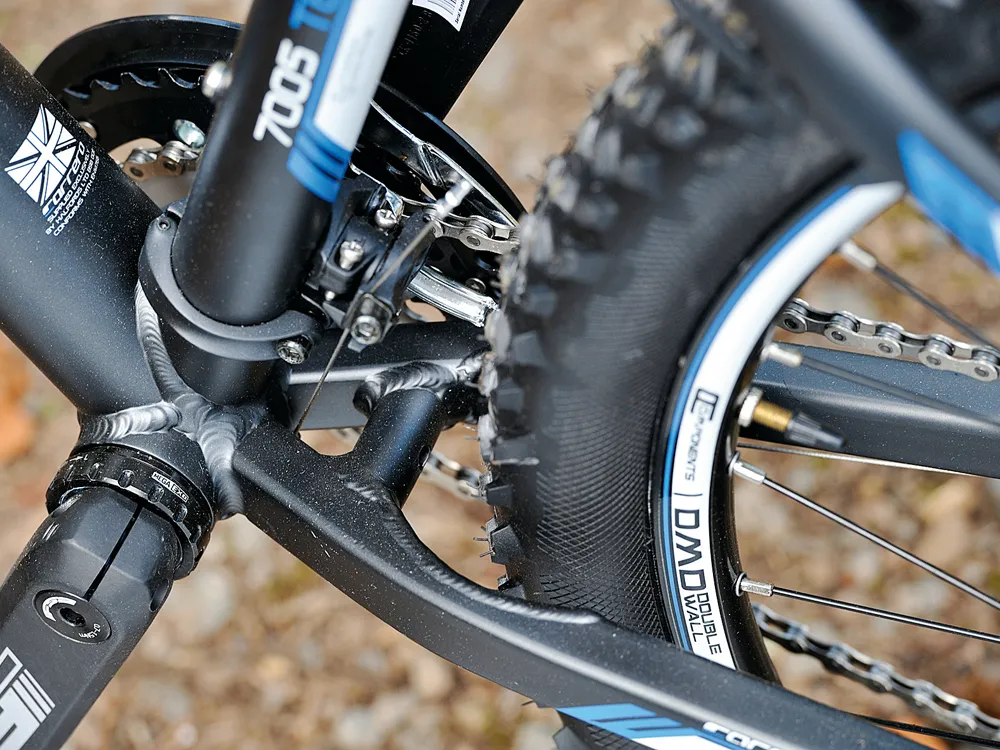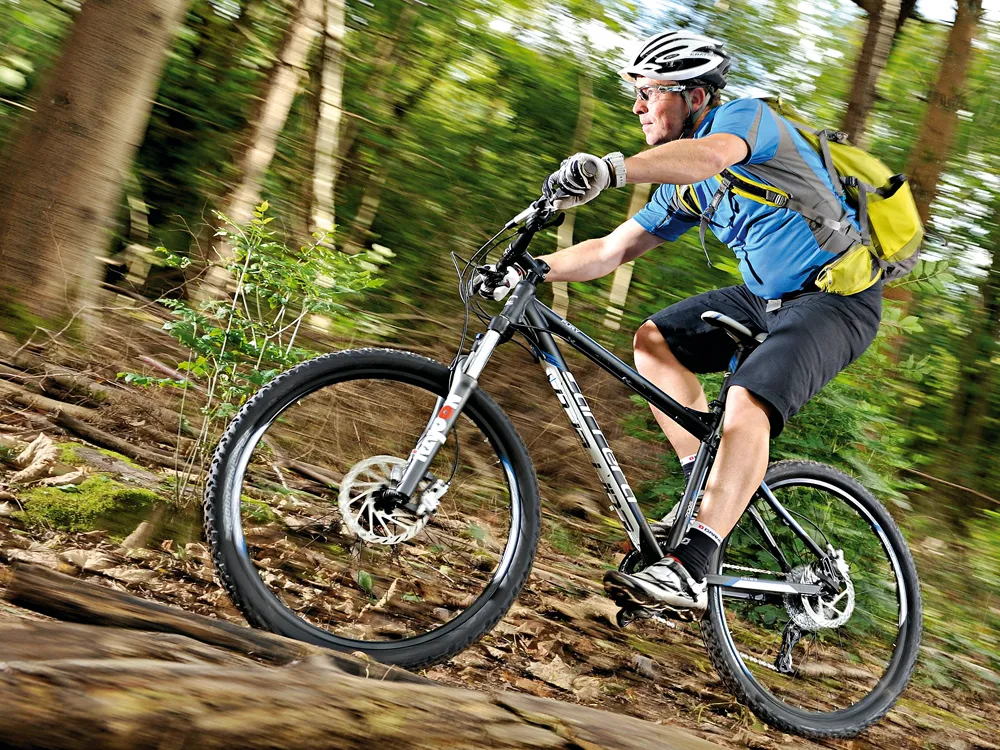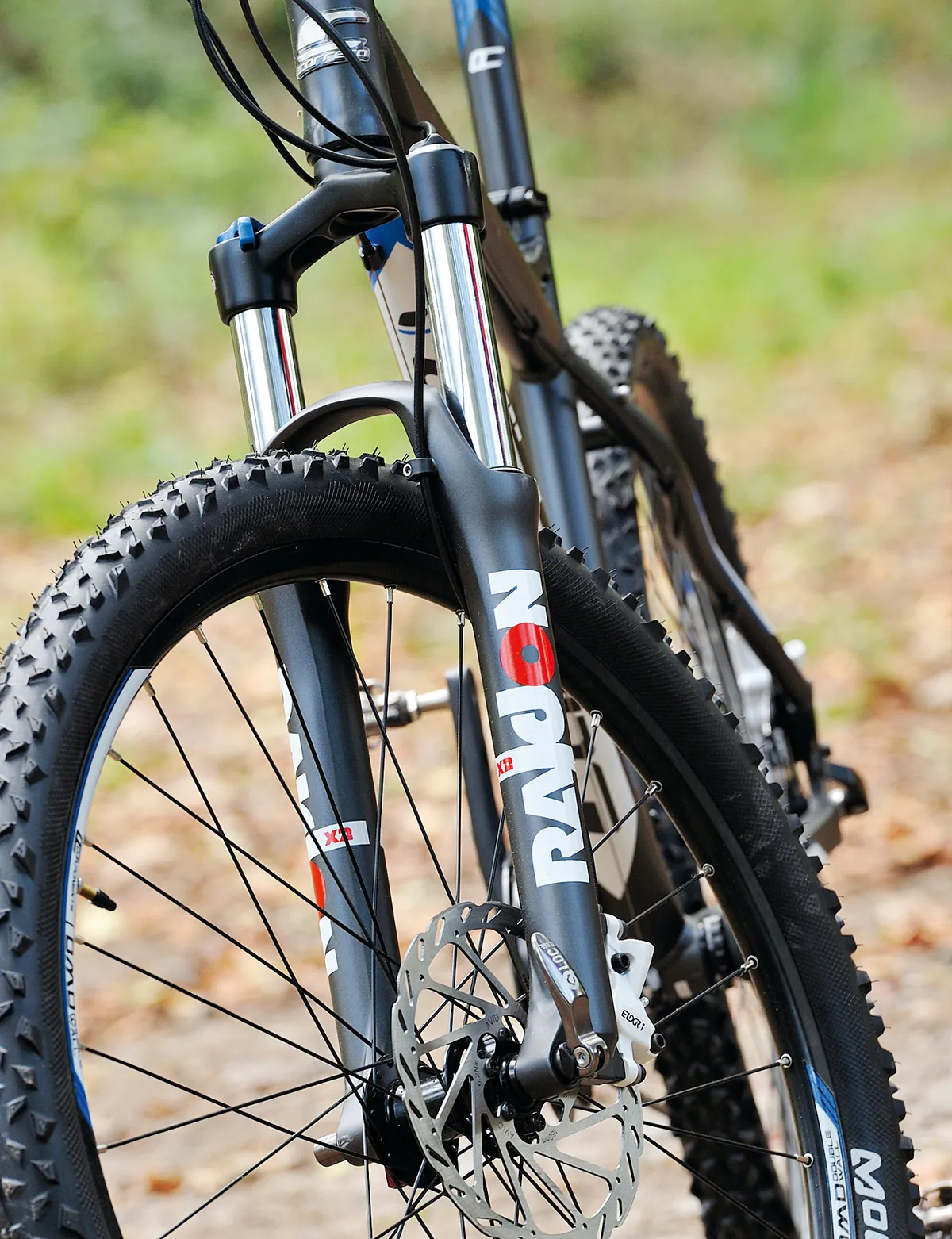Carrera’s Fury has been the entry-level hardtail to beat in the UK for a while. It’s a burly cross-country bike that’s well equipped and good enough to hit the majority of trails. For the 2012 model, rather than inflate the price, Halfords have adjusted the equipment spec.
Is this Fury still the bike it was before? Not quite. The introduction of 10-speed gearing doesn’t compensate for the downgraded suspension fork. But it’s a measure of how good the Carrera was before that you can subtract something from it and still be left with a bike that eclipses most of its rivals. If you’re after a do-it-all entry-level hardtail, for everything from bridleways to black routes, the Fury should still be on your shortlist.
Ride & handling: Confident trail ride
Compared to many bikes at this price, the Fury has a more sat up, trail-friendly stance, thanks to its taller fork, shorter, more steeply angled stem and wide bar. Even though it’s not a slack-angled hardcore hardtail and doesn’t have extra steering trail to stabilise it, you can still hit technical sections with confidence. It’s not so well suited to racing along pedally singletrack; your posture isn’t optimal and the biggest top gears are missing.
The Suntour Raidon X2 is much better than the oversprung and lifeless forks fitted to many budget bikes. You can set the air spring and rebound to suit you, and it tracks fairly well thanks to 32mm uppers and its 15mm axle. Where it suffers is in comparison with the more expensive Epicon fitted to last year's bike. The Raidon can get knocky on choppy surfaces. There’s a bit of flex between the upper and lower legs, and front braking on steep descents can create some disconcerting fork flutter.
Continental Mountain King tyres are reasonable all-rounders. We’d prefer them in the 2.4in than 2.2in width though. The Fury is an unyielding aluminium hardtail, and a bigger air pocket underneath would soften the back end and help the unrefined fork kill trail chatter up front. The 10-speed version of SRAM X5 is no better or worse than nine-speed. It feels rough-and-ready compared to Shimano Deore, particularly the front derailleur, which is hesitant changing down and stiff changing up. One benefit of the 2x10 setup is that the 36-tooth big ring gives more ground clearance.
Since the 10-speed cassette goes to 36 teeth (like some nine-speed ones), you can winch the Fury up most climbs. Coming down, the Avid Elixir 1 brakes have as much power and modulation as you can expect at this price. Noticeable hang-up over flat faced, square edged bumps and a habit of rushing through the travel without adding extra control mean the Fury is less big-hit capable and chaos controlled than other 6in-fork options, so look elsewhere for real lunacy.

Frame: Solidly built and well thought out
The Fury's heat-treated 7005 series aluminium frame is much the same as before, except that the welds have been left looking industrial rather than ground down and/or filled in. The tubes are butted to save weight, and substantial oversizing adds stiffness. The head tube is a standard 1-1/8in top and bottom. Front reinforcement comes from the fat tubes behind it and the wedge gusset at the down tube joint.
The extended seat tube – with forward-facing seatpost slot – is supported with a bracing strut to the top tube. The back end of the bike is solidly built, using big squarish-section chainstays that are cut out around the tyre. You could easily fit 2.4in rubber in there, with room to spare. The seatstays are less girder-like tubes that S-bend out around the tyre and feature pannier rack mounts.
Static head and seat angles measure 70 and 74 degrees respectively, and there’s a reasonable amount of reach. The only thing missing is a quick-release seat binder, which would provide more room for centre-of-gravity adjustments on difficult descents.
Equipment: Not as good as last year but still okay
The Fury’s most obvious change is its fork. It’s still a 120mm air fork from Suntour with a screw-through 15mm axle. Only now it’s one tier lower: a Raidon X2 instead of an Epicon. It’s heavier, since it uses a steel steerer rather than an aluminium one. The Speedlock lever on the fork crown does stop fork compression but feels more mechanical than hydraulic (which it is). There is rebound adjustment, although our fork had shed its adjuster knob prior to testing and needed an Allen key to turn.
Gearing is still SRAM X5, except it’s now 10- rather than nine-speed, with a 36/24-tooth double-and-bash crankset. Since the cassette now goes from 11 to 36T, the range is still good, missing only a few at the top end. The bottom bracket is better: an FSA external bearing one instead of the previous splined Truvativ one. Avid’s Elixir 1 brakes (previously the Fury had Juicy 3s) do a decent job of scrubbing off speed.
There’s more own-brand stuff on the new Fury; not just the saddle, stem and so on, but also the wheel rims. They're not as good as the previous Mavics but they're okay, being double-walled aluminium, with eyelets at the spoke holes for reinforcement. The single-bolt seatpost will need doing up tight to stay secure on rough trails. On the other hand, it’s nice to get a properly wide bar that’s fitted with lock-on grips.



